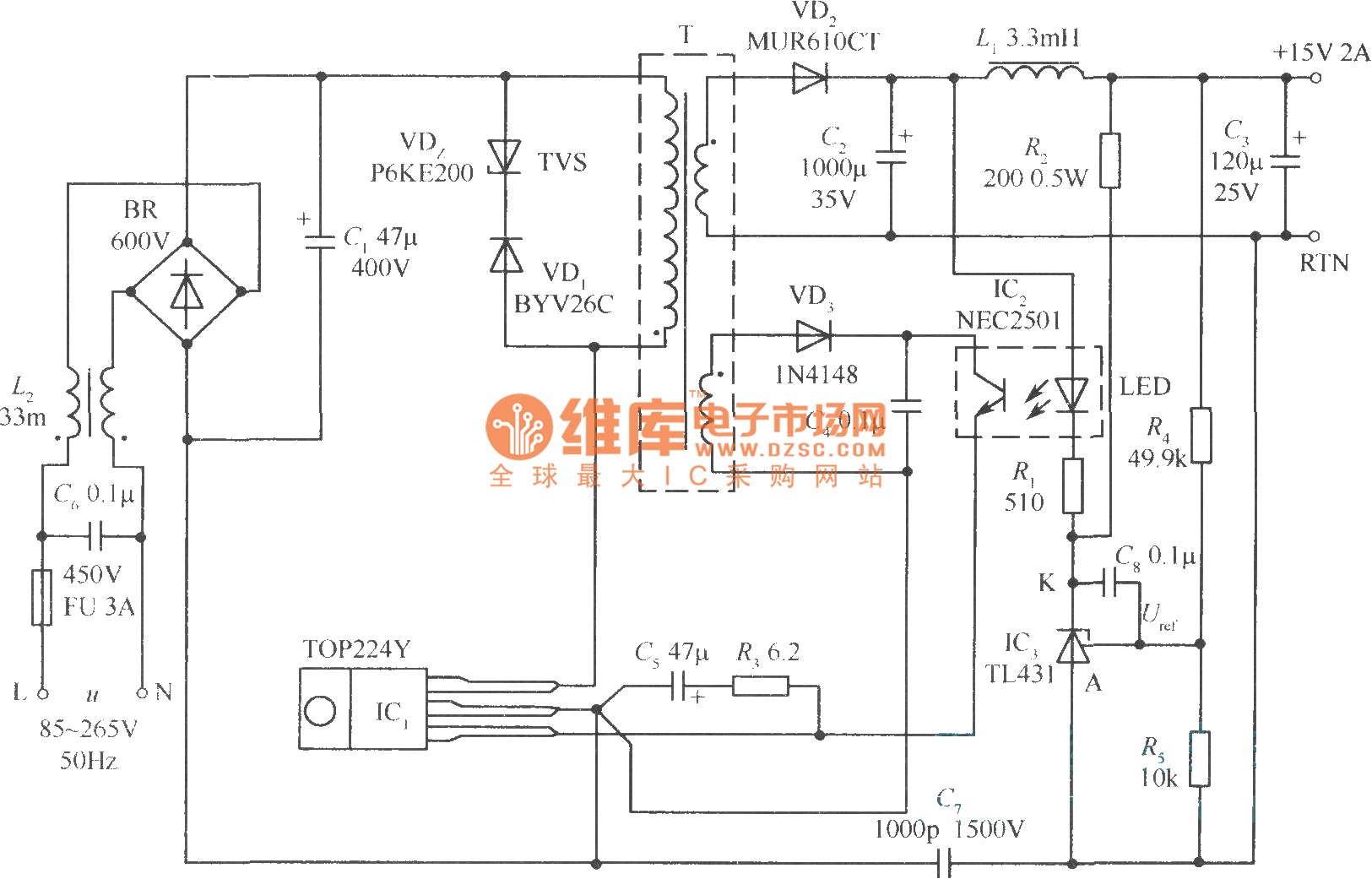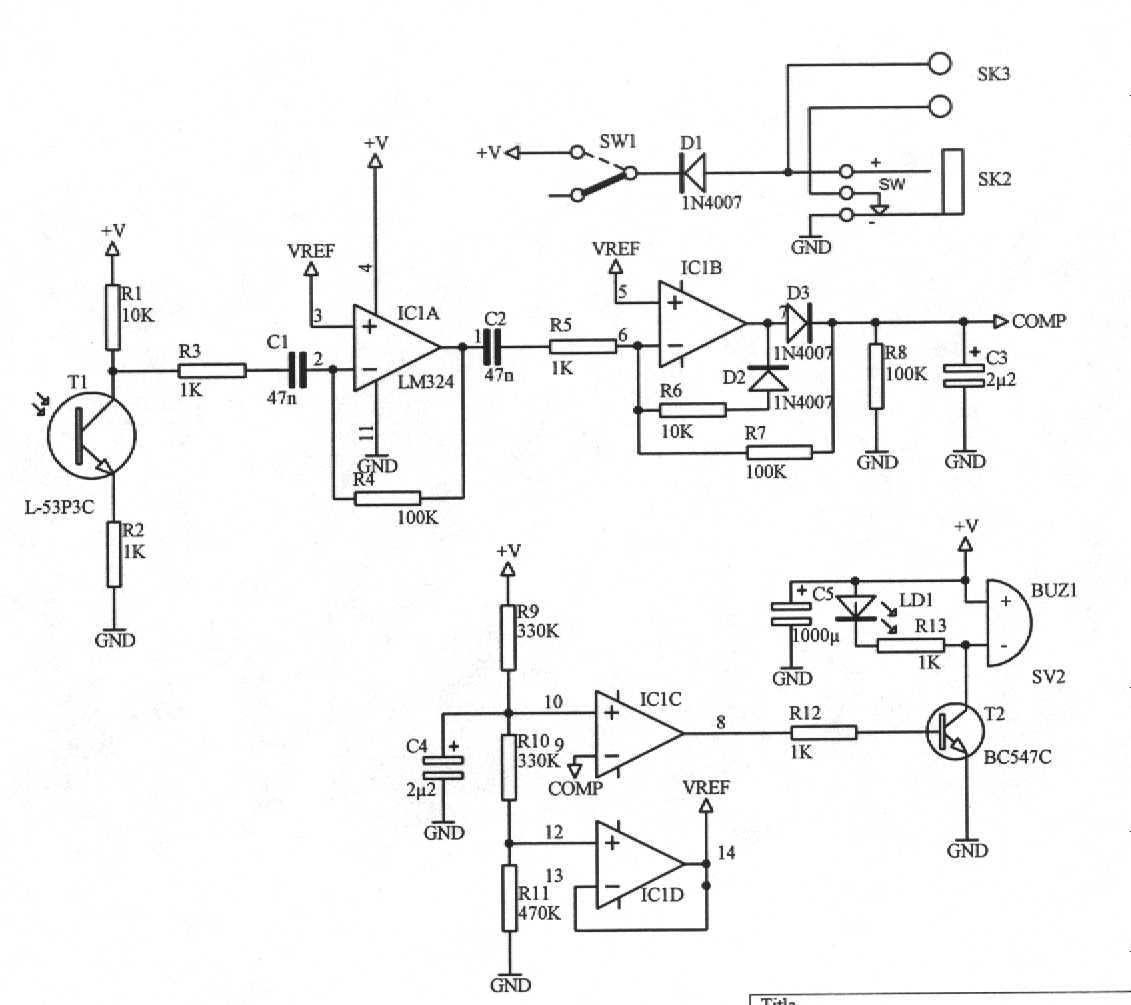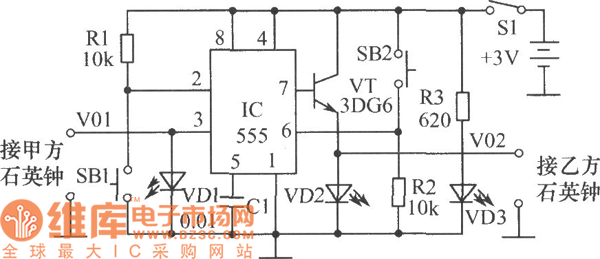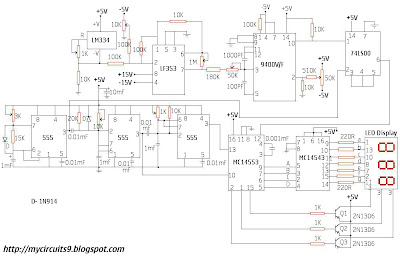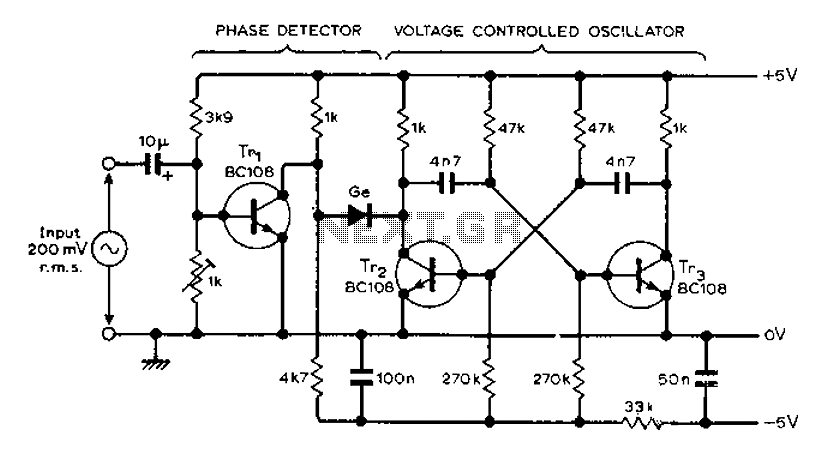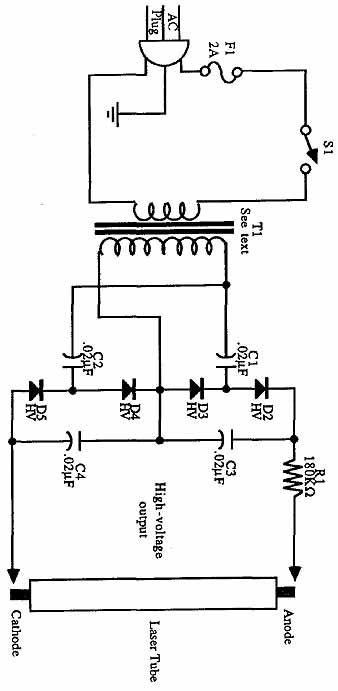
Power megaphone circuit
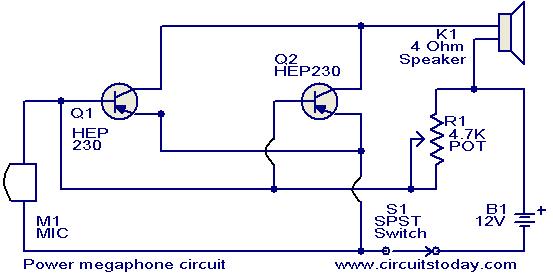
Any power transistor can be used in this megaphone, which is suitable for boats, playing fields, and similar applications. The transistors Q1 and Q2 are of the HEP-230 type, which are readily available in the market. These transistors are connected in parallel to manage the required power and ensure proper speaker matching. The microphone used is a carbon type, similar to those found in telephone handsets. If a standard carbon microphone is employed, the push-to-talk (PTT) switch can replace S1 to facilitate PTT operation, eliminating any warm-up or capacitor charge time. The HEP-230 is a PNP power transistor, comparable to the AD149 or 2SB337. As a PNP transistor, the collector must be connected to the negative terminal, while the emitter connects to the positive terminal. The microphone should solely be of the carbon type. Initially, R1 should be set to its maximum value, and by speaking into the microphone, the potentiometer should be adjusted until clear, undistorted sound is heard at a satisfactory volume. Further adjustments to R1 will increase current consumption while reducing volume. Caution is advised against using a car battery, as it may cause the transistors to fail catastrophically.
The megaphone circuit utilizes two HEP-230 PNP transistors (Q1 and Q2) configured in parallel to amplify the audio signal effectively. This configuration is particularly beneficial for applications requiring high power output, such as outdoor environments where sound needs to travel over long distances. The choice of the carbon microphone provides a reliable input source, ensuring clarity in sound capture, which is essential for effective communication.
The circuit operates with a straightforward power supply arrangement, where the collector of each transistor connects to the negative side of the power source, and the emitter connects to the positive side. This arrangement is crucial for the proper functioning of PNP transistors, as they require a negative voltage at the collector relative to the emitter.
The inclusion of a push-to-talk (PTT) switch allows for convenient operation, enabling the user to control when the microphone is active. This feature is particularly useful in scenarios where the megaphone is not in constant use, thereby conserving battery life and preventing unwanted noise.
Resistor R1 plays a vital role in controlling the gain of the circuit. By initially setting R1 to its maximum value, the user can ensure the circuit operates at a safe threshold, gradually adjusting the potentiometer for optimal sound quality without distortion. It is important to note that increasing the resistance further may lead to higher current draw, which can inadvertently lower the output volume.
Overall, this megaphone design provides a robust solution for amplifying sound in various settings, leveraging widely available components and simple circuit design principles to achieve effective audio amplification. Caution regarding power supply selection is critical, as inappropriate voltage levels, such as those from a car battery, can lead to rapid failure of the transistors, highlighting the importance of adhering to specified operating conditions.Just about any power transistor can be used in this megaphone. Its suitable for boats, playing fields etc. the transistors Q1 & Q2 are the HEP-230 type which are easily available in the market. The transistors are parallely connected to handle the required power and speaker matching. The microphone is a carbon type like that used in telephone hand sets . If a regular carbon mike is used the push-to-talk (PTT) switch can be connected in place of S1 to provide PTT operation. There will be no warm up or capacitor charge time. Hi Rex HEP 230 is a PNP power transistor similar to AD149 or 2SB337. As the transistor is pnp collector should get connected to negative and emitter to positive. Mic should be carbon type only. To start with keep R1 at maximum value and by talking into mic slowly adjust the pot till god quality (un distorted)sound is heard with good volume.
by adjusting R1 further will increase the current consumption and reduce the volume also. Never try with a car battery you may blow the transistors instantly in to smoke. 🔗 External reference
The megaphone circuit utilizes two HEP-230 PNP transistors (Q1 and Q2) configured in parallel to amplify the audio signal effectively. This configuration is particularly beneficial for applications requiring high power output, such as outdoor environments where sound needs to travel over long distances. The choice of the carbon microphone provides a reliable input source, ensuring clarity in sound capture, which is essential for effective communication.
The circuit operates with a straightforward power supply arrangement, where the collector of each transistor connects to the negative side of the power source, and the emitter connects to the positive side. This arrangement is crucial for the proper functioning of PNP transistors, as they require a negative voltage at the collector relative to the emitter.
The inclusion of a push-to-talk (PTT) switch allows for convenient operation, enabling the user to control when the microphone is active. This feature is particularly useful in scenarios where the megaphone is not in constant use, thereby conserving battery life and preventing unwanted noise.
Resistor R1 plays a vital role in controlling the gain of the circuit. By initially setting R1 to its maximum value, the user can ensure the circuit operates at a safe threshold, gradually adjusting the potentiometer for optimal sound quality without distortion. It is important to note that increasing the resistance further may lead to higher current draw, which can inadvertently lower the output volume.
Overall, this megaphone design provides a robust solution for amplifying sound in various settings, leveraging widely available components and simple circuit design principles to achieve effective audio amplification. Caution regarding power supply selection is critical, as inappropriate voltage levels, such as those from a car battery, can lead to rapid failure of the transistors, highlighting the importance of adhering to specified operating conditions.Just about any power transistor can be used in this megaphone. Its suitable for boats, playing fields etc. the transistors Q1 & Q2 are the HEP-230 type which are easily available in the market. The transistors are parallely connected to handle the required power and speaker matching. The microphone is a carbon type like that used in telephone hand sets . If a regular carbon mike is used the push-to-talk (PTT) switch can be connected in place of S1 to provide PTT operation. There will be no warm up or capacitor charge time. Hi Rex HEP 230 is a PNP power transistor similar to AD149 or 2SB337. As the transistor is pnp collector should get connected to negative and emitter to positive. Mic should be carbon type only. To start with keep R1 at maximum value and by talking into mic slowly adjust the pot till god quality (un distorted)sound is heard with good volume.
by adjusting R1 further will increase the current consumption and reduce the volume also. Never try with a car battery you may blow the transistors instantly in to smoke. 🔗 External reference
